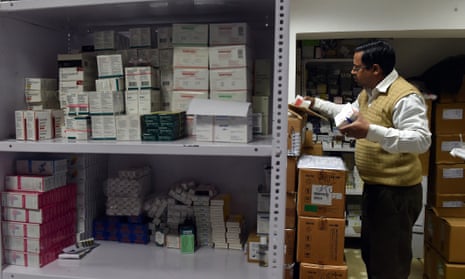Indian doctors have been told they can no longer prescribe branded drugs for their patients, provoking vehement protest from the Indian Medical Association [IMA].
New government guidelines demand a wider use of generic drugs, which are 30%-80% cheaper, reducing the cost of medicines for millions. When doctors prescribe a medicine for fever, for example, they will have to give paracetamol, not drugs such as Panadol or Calpol. Doctors liken this to “running trains without tracks” because the quality of generic drugs cannot be guaranteed.
“Quality control is very weak,” said the IMA in a statement. “There’s practically no guarantee of the quality of generic drugs, and prescribing them without assured quality would be detrimental to patient health.”
Dr Johnrose Austin Jayalal, the former IMA president, said: “About 2% of generic drugs are tested for quality. I have never taken a generic drug in my life for this reason.”
India is the world’s largest provider of generic drugs, with the government promoting the country as the “pharmacy of the world”. In 2022, it exported generic drugs worth more than £17bn , 20% of the global total volume. These exports are dominated by a few large companies certified by the World Health Organization, but India has thousands of small manufacturers which lack the infrastructure or technical ability to test for quality.
Regulation is, at best, haphazard, and fake drugs sold on the hidden market are also a problem. Contaminated cough syrup which originated in India was recently linked to the deaths of more than 300 children in the Gambia, Indonesia and Uzbekistan.
This prompted the government in June to make it mandatory for cough syrup manufacturers to have samples cleared by a government laboratory before being shipped out. However, Jayalal said: “The big companies follow better protocols than the small companies scattered across India. It’s a cottage industry, barely regulated.”
Akshita Jain, a book editor in New Delhi, knows from experience that some drugs are not always reliable. When her employee was diagnosed with hypertension a year ago, she thought that, given that the woman was likely to be on the drug for life, she would save some money. “We tried for months and months with the generic pills but her blood pressure just wouldn’t come down.
“When I panicked and sent her to another doctor, he prescribed Telma, and within a week it came down. I’ve learned my lesson,” said Jain.
Most Indian chemists do not even stock drugs that don’t come from the big brands since profit margins are too small. They can only be bought in government-run shops. Patients who take a prescription for a generic drug to a chemist would generally be offered a branded alternative – often whichever one the producer is giving the best deal on.
“The chemist also won’t know what other drugs the patient is on, and how they may react with the new one,” said Jayalal. The decision about what drug to give a patient will move from the doctor to the chemist. Until we have confidence in the quality of generic drugs, we cannot prescribe them.”
The IMA president, Dr Sharad Agarwal, also expressed concern about the reputations of doctors. “Imagine a patient comes to me with fever and I write a generic drug. They take it and don’t get better. Then they get the branded drug or someone they know suggests it to them, and they get better. Think of what it does for my reputation,” he told the Indian Express.
